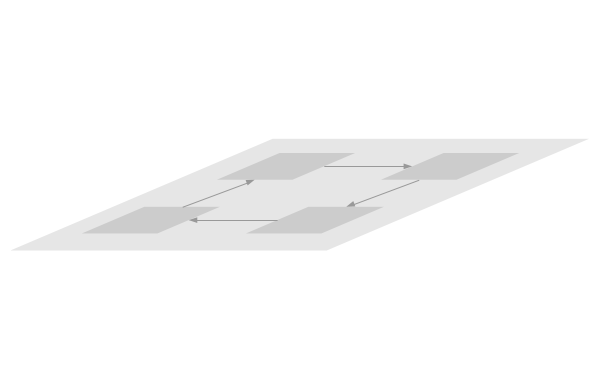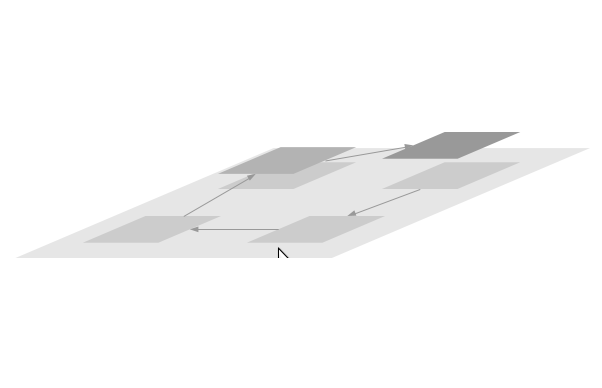[This post is part of a series on The Method to use The Model — my model for the human emotional system designed for use in leadership, self-awareness, and general purpose professional and personal development — which I find the most effective and valuable foundation for understanding yourself and others and improving your life. If you don’t see a Table of Contents to the left, click here to view the series, where you’ll get more value than reading just this post.]
Recalling the illustration of the Method from a couple posts ago, I present the Method as a four-step cycle (steps 1-4), grounded in knowing your emotional system (step 0).
- Know your emotional system
- Understand your relevant emotional cycles and constraints (plus an extra note on points 0 and 1, on awareness)
- Conceive of new emotions
- Conceive of new environments, beliefs, and behaviors
- Implement the environments, beliefs, and behaviors
 From this perspective, after transforming part of your life, you end up at the start, ready to start transforming something else. Nothing wrong with that, but there’s a bigger picture.
From this perspective, after transforming part of your life, you end up at the start, ready to start transforming something else. Nothing wrong with that, but there’s a bigger picture.
From another perspective you’ve changed. You’ve moved in a different dimension, as illustrated by the series of illustrations below. Instead of thinking of moving in circle, you move in a helix, or three-dimensional spiral (I made the best animation I could).







The distance you moved up is how much your life changed. If you change your life randomly, not based in self-awareness, you will move in random directions.
When you change your life based in self-awareness, you improve your life, as illustrated schematically here.

When you move up you increase your
- Experience
- Reward
- Ability to transform again
- Expectation of success, which equals motivation.
By the way, while in other posts I’ve written how I find using judgmental language or calling emotions positive or negative counterproductive to improving your life, in the case of changing your life based on the Method, I use judgmental language and call it improving. Since you are evaluating your life and your emotions by your standards, not by anybody else’s, you have no ambiguity between different standards.
When you consider your life better, it’s better.
Tomorrow let’s look at the effect of many such changes — that is, the effect of many transformations based in self-awareness.
Recalling the illustration of the Method from a couple posts ago, I present the Method as a four-step cycle (steps 1-4), grounded in knowing your emotional system (step 0).
- Know your emotional system
- Understand your relevant emotional cycles and constraints (plus an extra note on points 0 and 1, on awareness)
- Conceive of new emotions
- Conceive of new environments, beliefs, and behaviors
- Implement the environments, beliefs, and behaviors
 From this perspective, after transforming part of your life, you end up at the start, ready to start transforming something else. Nothing wrong with that, but there’s a bigger picture.
From this perspective, after transforming part of your life, you end up at the start, ready to start transforming something else. Nothing wrong with that, but there’s a bigger picture.
From another perspective you’ve changed. You’ve moved in a different dimension, as illustrated by the series of illustrations below. Instead of thinking of moving in circle, you move in a helix, or three-dimensional spiral (I made the best animation I could).







The distance you moved up is how much your life changed. If you change your life randomly, not based in self-awareness, you will move in random directions.
When you change your life based in self-awareness, you improve your life, as illustrated schematically here.

When you move up you increase your
- Experience
- Reward
- Ability to transform again
- Expectation of success, which equals motivation.
By the way, while in other posts I’ve written how I find using judgmental language or calling emotions positive or negative counterproductive to improving your life, in the case of changing your life based on the Method, I use judgmental language and call it improving. Since you are evaluating your life and your emotions by your standards, not by anybody else’s, you have no ambiguity between different standards.
When you consider your life better, it’s better.
Tomorrow let’s look at the effect of many such changes — that is, the effect of many transformations based in self-awareness.
Recalling the illustration of the Method from a couple posts ago, I present the Method as a four-step cycle (steps 1-4), grounded in knowing your emotional system (step 0).
- Know your emotional system
- Understand your relevant emotional cycles and constraints (plus an extra note on points 0 and 1, on awareness)
- Conceive of new emotions
- Conceive of new environments, beliefs, and behaviors
- Implement the environments, beliefs, and behaviors
 From this perspective, after transforming part of your life, you end up at the start, ready to start transforming something else. Nothing wrong with that, but there’s a bigger picture.
From this perspective, after transforming part of your life, you end up at the start, ready to start transforming something else. Nothing wrong with that, but there’s a bigger picture.
From another perspective you’ve changed. You’ve moved in a different dimension, as illustrated by the series of illustrations below. Instead of thinking of moving in circle, you move in a helix, or three-dimensional spiral (I made the best animation I could).







The distance you moved up is how much your life changed. If you change your life randomly, not based in self-awareness, you will move in random directions.
When you change your life based in self-awareness, you improve your life, as illustrated schematically here.

When you move up you increase your
- Experience
- Reward
- Ability to transform again
- Expectation of success, which equals motivation.
By the way, while in other posts I’ve written how I find using judgmental language or calling emotions positive or negative counterproductive to improving your life, in the case of changing your life based on the Method, I use judgmental language and call it improving. Since you are evaluating your life and your emotions by your standards, not by anybody else’s, you have no ambiguity between different standards.
When you consider your life better, it’s better.
Tomorrow let’s look at the effect of many such changes — that is, the effect of many transformations based in self-awareness.

Pingback: The Method: long-term growth from many transformations - Joshua Spodek